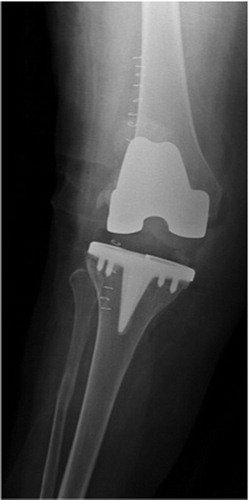Loose knee implants - Time for revision
A knee replacement is a surgical procedure also known as knee arthroplasty. It is done by surgical replacement of a damaged knee joint with an artificial joint called a prosthesis. After the damaged joint is removed, two metallic prostheses are fixed with bones. Finally, a plastic spacer or insert is placed in between two metallic components.
Various factors can contribute to the wear and loosening of a knee implant, such as wear of the spacer between the parts of the implant, wear of the polyethylene component, high-impact activities, excessive body weight, etc. What that means is another surgery is needed to fix the loose knee implant.
For an implant to function properly, it depends on its suitable fixation to the bone. Most fixations are done by cementing the implant to the bone, while some surgeons prefer not to use any cement in between the bone and the implant.
How do you know your knee implant needs a revision?
When you have the following symptoms, it might be time to get a knee implant revision:
1. Swelling around the implanted knee
2. Pain around the implanted knee
3. Redness and warmth around the knee
4. Difficulty walking
5. Reduced range of motion at the implanted knee
6. Loosened knee implant
Here are some of the factors that cause a knee replacement to become loose.
1. Wear and Loosening
Although most knee replacement implants are firmly fixed at the beginning, they become loose over time. This can be due to abrasion caused by the joint surfaces eroding against each other, which wears off the surfaces of the implant, causing small particles to accumulate around the joint.
In a non-infected loosening, the body tries to absorb these wear particles and, in the process, absorbs healthy bones in a condition called osteolysis. This could lead to fractures or weakening of the bone, causing the patient to experience instability, pain, or change in alignment. In this case, a revision surgery needs to be done to correct it.
2. Infection
After total knee surgery, the prosthesis (plastic and metal) can present as a covering for the bacteria to latch onto. This process is called biofilm formation. The location makes the bacteria unreachable by antibiotics. Thus, revision surgery is done to stop the swelling, pain, and drainage from the infection. Depending on the degree of infection, the surgeon will either carry out a simple wash-out of the knee while keeping the implant intact or exchange the implants with new ones during a full revision operation.
3. Fracture
Fractures may occur in the femur or tibia bone. This is because, during knee replacement surgery, the end bones are prepared by cutting and drilling. A hole is drilled into this end and a metal stud is hammered into the thigh where a new knee joint is attached. If the bone becomes too weak or too aggressive, a fracture can occur. Revision surgery will be needed to fix it.
4. Instability
This happens when the tissues around the knee joint are not able to give the necessary stability needed for proper functioning, like standing or walking. Improper alignment of the prosthesis or increased soft-tissue laxity (looseness) results in instability.
Treatment for a loose knee replacement prosthesis
Loose joints do not work properly. Your knees will wobble, making you more susceptible to accidents. The solution for loose prostheses is revision knee arthroplasty. During revision surgery, the doctor removes the existing prosthesis and inserts another new prosthesis. In the case of infectious loosening, the doctor can revise the prosthesis in two steps.
Note: All information on this website (https://www.doctor-pal.com) is published in good faith and for general information purposes only. Dr. Indranil Pal does not guarantee the completeness, reliability, or accuracy of this information. Actions based on the information contained on this website are entirely at your own risk. Doctor Pal shall not be liable for any loss and/or damages related to the use of our website. Talk to your doctor who can advise you about your health and illness.






